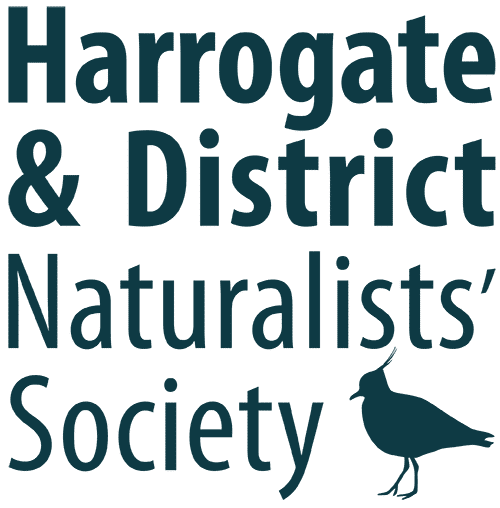Undeterred by a weather forecast above 30°C, HDNS members assembled at the Burton Leonard quarry entrance armed with sun hats, sun cream and plenty of water. The day was intended as a refresher course for grasses and sedges, led by Kevin Walker. There would also be many other interesting plants for us to see at this magnesian limestone site.
Before we set off, Kevin showed us some of the books that were available on the topic of grasses and sedges. (I was horrified to see that he was carrying them around in the extreme heat, but he seemed not to mind.) At any rate it was very helpful to hear what he had to say and I have certainly made a mental note of which ones I would like to own and which to avoid.
Some people were new to grasses, so Kevin began with the basics and showed us Cock’s-foot grass. This is a very common native perennial, with an asymmetrical flower head making it easy to identify. We then moved on to Perennial Rye-grass which is also a native perennial and also extremely common.
Other grasses spotted early on included Reed Canary-grass, comprising lots of stems growing from rhizomes. This grass can grow up to 2m tall. Also several Bromes including Wood Brome (or Hairy Brome) with very hairy stems and leaves and which likes to grow in the shade; False Brome; and Upright Brome, with its herringbone hairs on the leaf edges (like camels’ eyelashes). We were also shown Meadow Oat-grass (Helictotrichon pratensis) and discussed this species in contrast with Downy Oat-grass (pubescens) which is hairy on its lower leaves and sheaths. It was interesting to learn about False Oat-grass Arrhenatherum elatius, which is distinguished by its lack of any features whatsoever, other than being taller than other grasses!
Next up were the pretty Bent grasses, with their fine, feathery inflorescences. Some can be difficult to tell apart for example Creeping Bent Agrostis stolonifera and Common Bent Agrostis capillaris. Another type of grass which is delightful to find is Quaking Grass, Briza. This has distinctive oval to heart-shaped pendulous spikelets which hang on long slender stalks and quake in the breeze.
Higher up on the reserve we came across Tor-grass Brachypodium pinnatum. This was growing in a dense mass spreading by its creeping wiry rhizomes. We then found several sedges including Glaucous Sedge, Spring Sedge, Flea Sedge and Carnation Sedge.
During his discussions on grasses, Kevin spoke quite a bit about tillers. Apparently tillers are new shoots that grow from the base of a grass, distinct from the main stem that grows from a seed. These tillers are crucial for vegetative reproduction and can also contribute to seed production.
After spending the morning on various grasses and sedges, we were very happy to hear about other plants as well and Kevin did not disappoint. First up were the garlics – both Field Garlic and Sand Leek were present along the path.
After a lifetime of wondering why one occasionally comes across fields of chicory in the countryside, I learnt from Kevin the reason. It seems that it is planted to provide ground cover for game birds, in this case Red-legged partridges. Muff later pointed out that chicory flowers close up and disappear when the sun reaches its highest point. This explains why it looked as though the chicory flowers had completely disappeared on our way back!
Kevin made a point of showing us Hawkweed Oxtongue, Picris hieracioides with its bright, yellow, sunny flower heads. We were also lucky enough to find both Wall Lettuce and Nipplewort close together which enabled us to see the differences in their leaves. Then later on we found the tiny, rare Squinancywort plant, Asperula cynanchica which was new to a few of us.
Surprisingly, we did not see a great number of butterflies considering how warm and sunny it was. We did however find grasshoppers in abundance, and it was such a joy to both hear and see them amongst the grasses.
Burton Leonard is a delightful little reserve especially in high summer. We lunched in the shade of an old hawthorn tree …… it was such a perfect day……
Thank you to Kevin Walker for leading us on the day and to Muff Upsall for organising.
Sonia Starbuck
